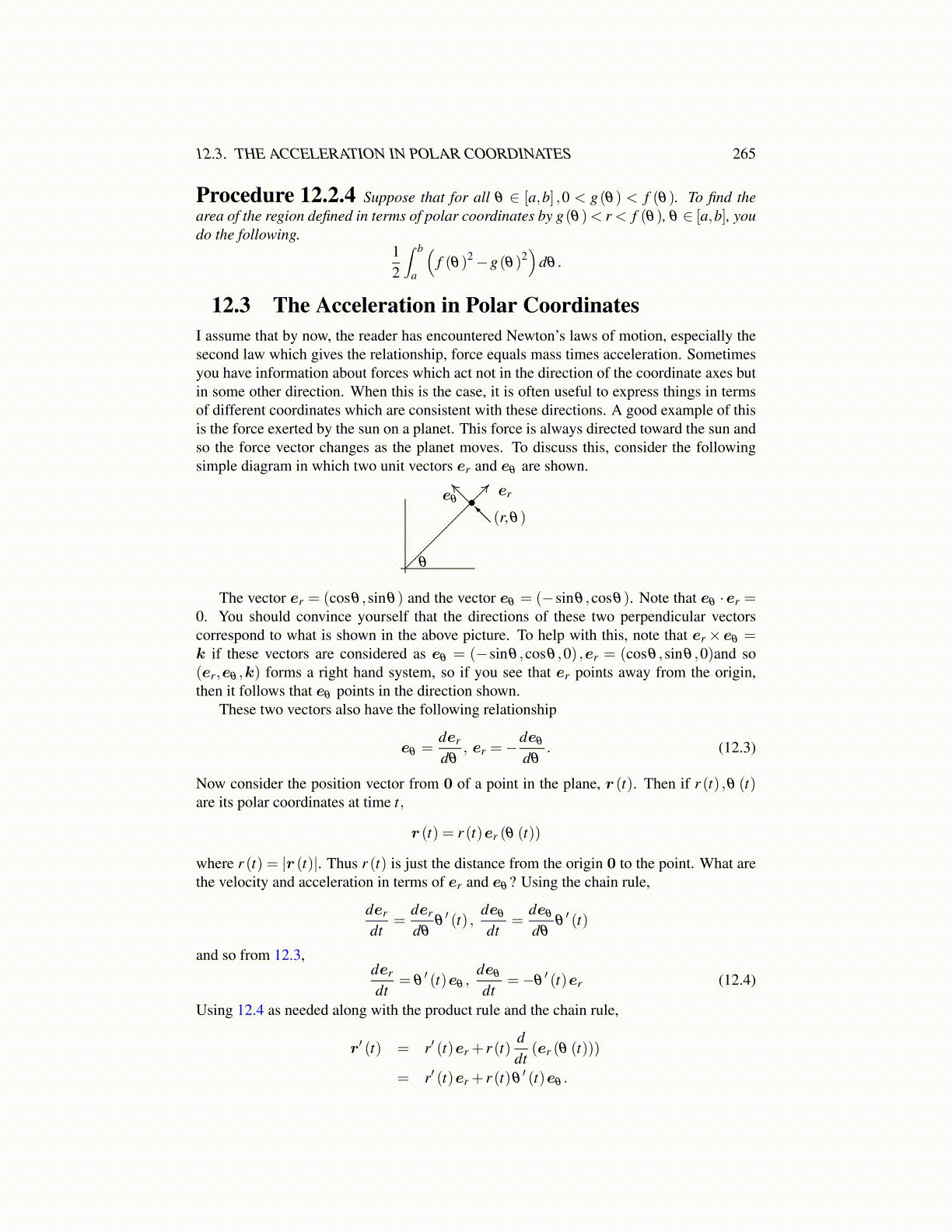
12.3. THE ACCELERATION IN POLAR COORDINATES 265
Procedure 12.2.4 Suppose that for all θ ∈ [a,b] ,0 < g(θ) < f (θ). To find thearea of the region defined in terms of polar coordinates by g(θ)< r < f (θ), θ ∈ [a,b], youdo the following.
12
∫ b
a
(f (θ)2 −g(θ)2
)dθ .
12.3 The Acceleration in Polar CoordinatesI assume that by now, the reader has encountered Newton’s laws of motion, especially thesecond law which gives the relationship, force equals mass times acceleration. Sometimesyou have information about forces which act not in the direction of the coordinate axes butin some other direction. When this is the case, it is often useful to express things in termsof different coordinates which are consistent with these directions. A good example of thisis the force exerted by the sun on a planet. This force is always directed toward the sun andso the force vector changes as the planet moves. To discuss this, consider the followingsimple diagram in which two unit vectors er and eθ are shown.
•ereθ
θ
(r,θ)
The vector er = (cosθ ,sinθ) and the vector eθ = (−sinθ ,cosθ). Note that eθ ·er =0. You should convince yourself that the directions of these two perpendicular vectorscorrespond to what is shown in the above picture. To help with this, note that er ×eθ =k if these vectors are considered as eθ = (−sinθ ,cosθ ,0) ,er = (cosθ ,sinθ ,0)and so(er,eθ ,k) forms a right hand system, so if you see that er points away from the origin,then it follows that eθ points in the direction shown.
These two vectors also have the following relationship
eθ =der
dθ, er =−deθ
dθ. (12.3)
Now consider the position vector from 0 of a point in the plane, r (t). Then if r (t) ,θ (t)are its polar coordinates at time t,
r (t) = r (t)er (θ (t))
where r (t) = |r (t)|. Thus r (t) is just the distance from the origin 0 to the point. What arethe velocity and acceleration in terms of er and eθ ? Using the chain rule,
der
dt=
der
dθθ′ (t) ,
deθ
dt=
deθ
dθθ′ (t)
and so from 12.3,der
dt= θ
′ (t)eθ ,deθ
dt=−θ
′ (t)er (12.4)
Using 12.4 as needed along with the product rule and the chain rule,
r′ (t) = r′ (t)er + r (t)ddt
(er (θ (t)))
= r′ (t)er + r (t)θ′ (t)eθ .